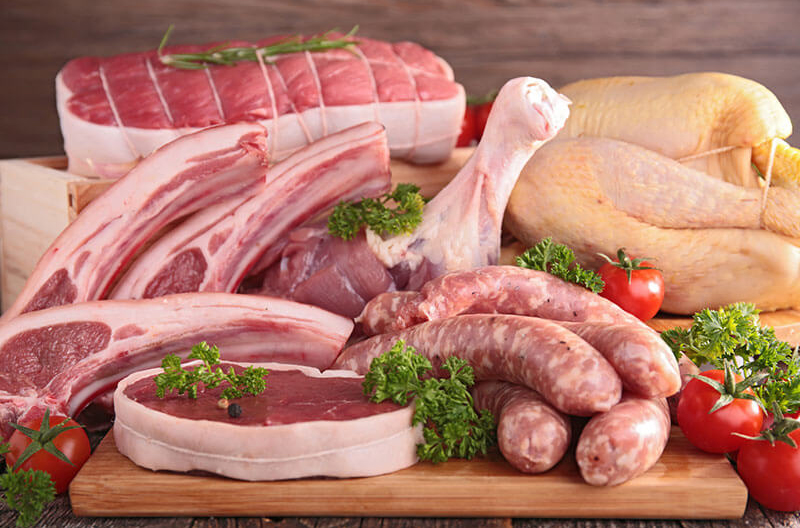The Power of Meat 2020, the 15th annual in-depth study of meat and poultry through shoppers’ eyes, explores consumption trends, sales growth and consumer preferences and found demand for meat is accelerating with $50.5 billion in sales for 2019.
The study is conducted by FMI–The Food Industry Association and the Foundation for Meat and Poultry Research and Education, the foundation for the North American Meat Institute (NAMI). The study was released March 2 at the annual Meat Conference, which continues through March 4 in Nashville, Tennessee.
“The Power of Meat is a thorough examination of consumer behavior and reflects the value of meat and poultry to retailers,” said Julie Anna Potts, NAMI president and CEO. “The survey affirms the ongoing work of the industry to improve trust in animal protein is welcomed by consumers and useful to retailers.”
The survey took a deep dive into consumer interest in topics like production claims and sustainability. With 49 percent believing that animal agriculture does not have negative impacts on the planet if done properly, the belief that it does have negative impacts is higher among younger generations, showing the opportunity and importance of consumer education.
Meat department sales are strong in dollars and volume, driven by beef and chicken, and spending per household increased. When it comes to meat consumption, moderation is far more popular than elimination, with flexitarians (12 percent) looking to reduce their animal protein through smaller portion sizes and/or a day without meat/poultry.
FMI VP of Fresh Foods Rick Stein noted how meat-shopper consumption patterns are shifting. “One of the most compelling storylines in the analysis is that 83 percent of shoppers purchase specific cuts of meat and they are eating smaller portions, but with total volume sales up slightly, that means they are eating less more often,” Stein said.
Meat brands continued to benefit from being a preferred purchase among younger shoppers, but 2019 was a strong year for private brands (up 12.3 percent). Shoppers say they want to hear from brands about nutrition (58 percent), food safety practices (57 percent), animal care practices (46 percent) and the brand’s environmental impact (40 percent).
Top findings of the Power of Meat
• Meat and poultry sales grew 1.0 percent over 2019 to $50.4 billion. Meat department sales are accelerating in dollars and volume, driven by beef and chicken. Household penetration is steady, but a focus on smaller portions and limiting second helpings may pressure volume gains.
• Plant-based meat alternatives are a small but growing market.
Total store plant-based meat alternative sales were $760 million in 2019 and grew 11.8 percent. They are mostly an occasional choice driven by perceived health benefits, being a good source of protein, just something different and environmental reasons. Blended vegetable/meat items, such as mushroom burgers, have a higher and greater cross-population appeal and can be a bridge to the societal and health benefits people look for, while keeping meat on the plate.
• Time-saving solutions drive meat and cooking appliance choices.
While the number of weekly home-cooked meals dropped to 4.5 over 2019, dinners containing animal protein increased to 3.9. Newer cooking appliances, including the Instant Pot and air fryer, continue to make inroads in both ownership and being used to prepare meat and poultry.
• Influenced by healthy and ethical living, production claims remain popular.
Shoppers would greatly welcome protein content on-pack and tips on superior nutritional choices that do not cost more and are equally tasty. Organic, grass-fed and no-antibiotics-ever offerings saw robust sales gains, but overall trust in such claims is only moderate. Building trust in and understanding of claims is key to continued growth—particularly given the importance of production claims to those looking to reduce their meat/poultry intake due to animal welfare, environmental or health concerns.
• Promotional ads remain relevant but there is increased focus on in-store communication.
In-store promotional signage remains the top way to check meat and poultry specials (55 percent) after dethroning the print ad (44 percent) last year.
• Eighty-five percent of shoppers buy just a handful of cuts and kinds of meat and poultry.
Gen Z and Millennials are three times more likely than Boomers to express doubt in their ability to cook new cuts and kinds of meat and poultry or knowing how it will taste.
• Supermarkets remain meat powerhouses with some gains in online meat sales.
More than half of shoppers primarily buy meat and poultry at supermarkets. Forty percent of shoppers have ordered groceries and 19 percent meat and poultry online, up from 14 percent last year. Processed meat, chicken and ground beef are the most likely meat items in online baskets.
• Brands continued to benefit from being a preferred purchase among younger shoppers.
Last year was a strong year for private brands (+12.3 percent). Shoppers want to hear from brands about nutrition (58 percent), food safety practices (57 percent), animal care practices (46 percent) and the brand’s environmental impact (40 percent).
• Sixty-eight percent of shoppers feel it is important for grocery stores to provide transparency into how and where livestock was raised.
Shoppers most want to see information on-pack, followed by a brand’s website or social media.
• Sustainability concerns impact meat and poultry choices, but 49 percent believe, if done properly, animal agriculture doesn’t have negative impacts on the planet.
Environmental sustainability is affecting protein choices. While 34 percent of consumers believe raising livestock has some or a lot of negative impact on the planet, this belief is much stronger among younger generations. The industry has an opportunity to improve the availability of unbiased environmental impact information to educate on steps taken to protect the planet.
The Power of Meat study was conducted by 210 Analytics and is made possible by Cryovac, a Division of Sealed Air.

